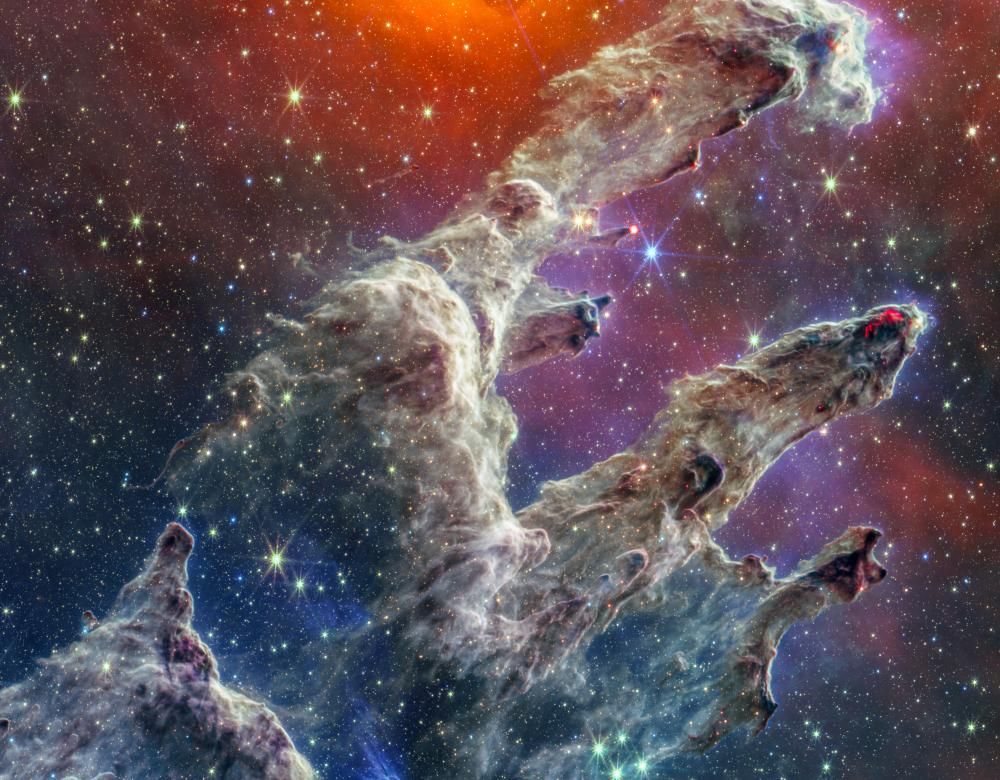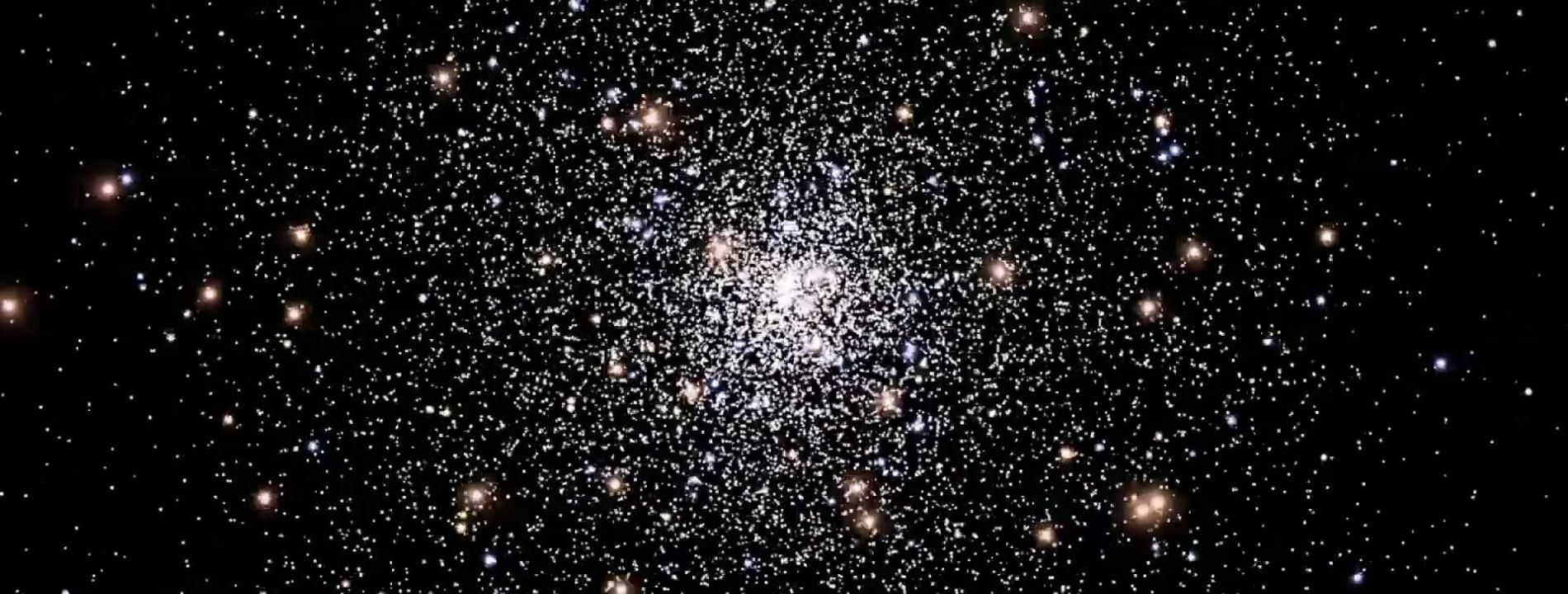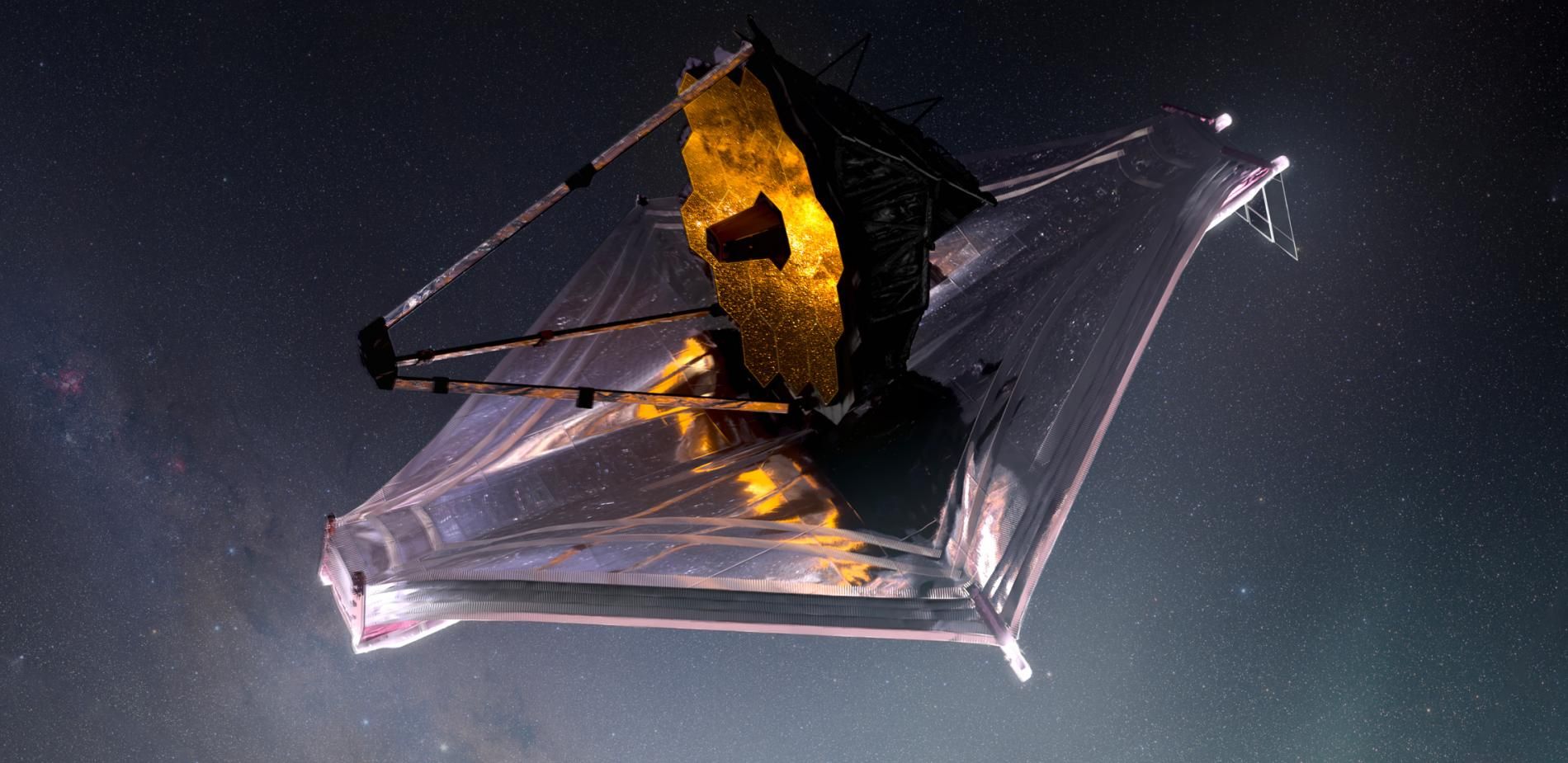
James Webb opens a window to the universe
The unprecedented performances of the James Webb Space Telescope reveal a previously inaccessible part of the universe: the oldest galaxies, nascent stars, and the atmosphere of exoplanets. It’s a revolution in sky observation!
Text by Adrien Denèle - Published on
A technological wonder in the Earth’s shadow
It’s finally here! The astrophysical community has been waiting for this new flagship of space astronomy with baited breath since 2007, when its launch was originally planned. The telescope finally left Earth on 25 December 2021 for a budget nine times higher than the original estimate of one billion dollars. After a successful launch by the European Ariane 5 rocket, the James Webb Space Telescope (JWST) had to be turned on. Rather than heating the engines, it cooled them thanks to the space vacuum. Onboard cryogenic devices also contributed to the cooling effect, just like fridges, essential for reaching the optimal operating temperature. The sunshades expanded, the mirrors aligned, and the instruments booted up. The JWST has several missions: to see further, including into the past of our universe; to observe the behaviour of stars, nebulae and galaxies to understand their evolution; and of course, to discover new worlds on exoplanets with atmospheres that we have only just begun to decipher. The final results are still being analysed, but the images provided by the telescope are spectacular with sumptuous updated photos of Hubble and new perspectives of our own Solar System. Using its infrared system, the James Webb is able to see through the clouds of gas that usually cover the entire universe with fog.
The Carina Nebula – a spatial canvas
An instant fan club. This new snapshot of Carina Nebula in our Milky Way has outdone the Hubble snapshot exploit by piercing the thick cloud, discovering ingredients for the formation of future stars. The image sparks the imagination. Can you see cliffs – the highest exceed seven light-years in length – or a coast by the sea?
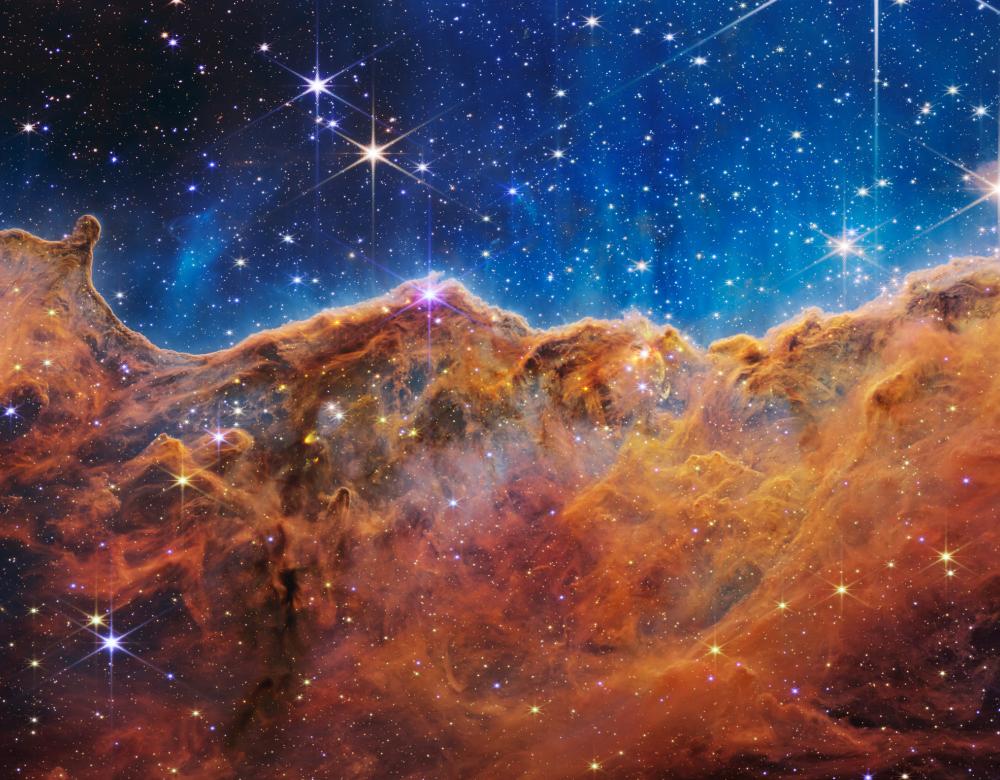

Hubble vs James Webb
For some, a divine hand, for others, gigantic pillars. The famous cloud of gas and dust is actually a cradle of stars in formation, some of which are just a few thousand years old. The Pillars of Creation, a few light-years high, was one of Hubble Space’s iconic images (left). But its mirrors could only observe visible light. The infrared instruments on the James Webb see through mist and gases, revealing thousands of stars (right).
Stephan’s Quintet
This is one of the largest mosaics shown by James Webb: the five galaxies of Stephan’s Quintet in the Centaurus constellation. Two of them collide in an orange-red cluster, while the galactic tails of others intertwine, attracted by strong gravity. The image required the reconstruction of 1,000 shots for 150 million pixels! A bounty of data for researchers developing models to trace the path of galaxies and understand how they interact.
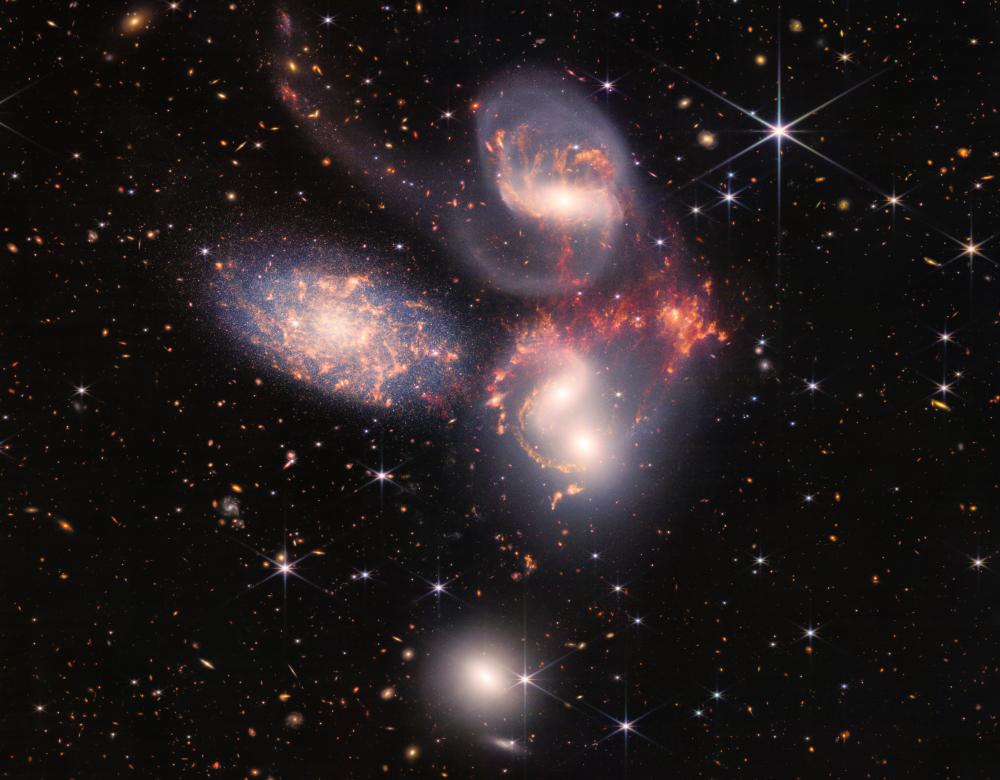
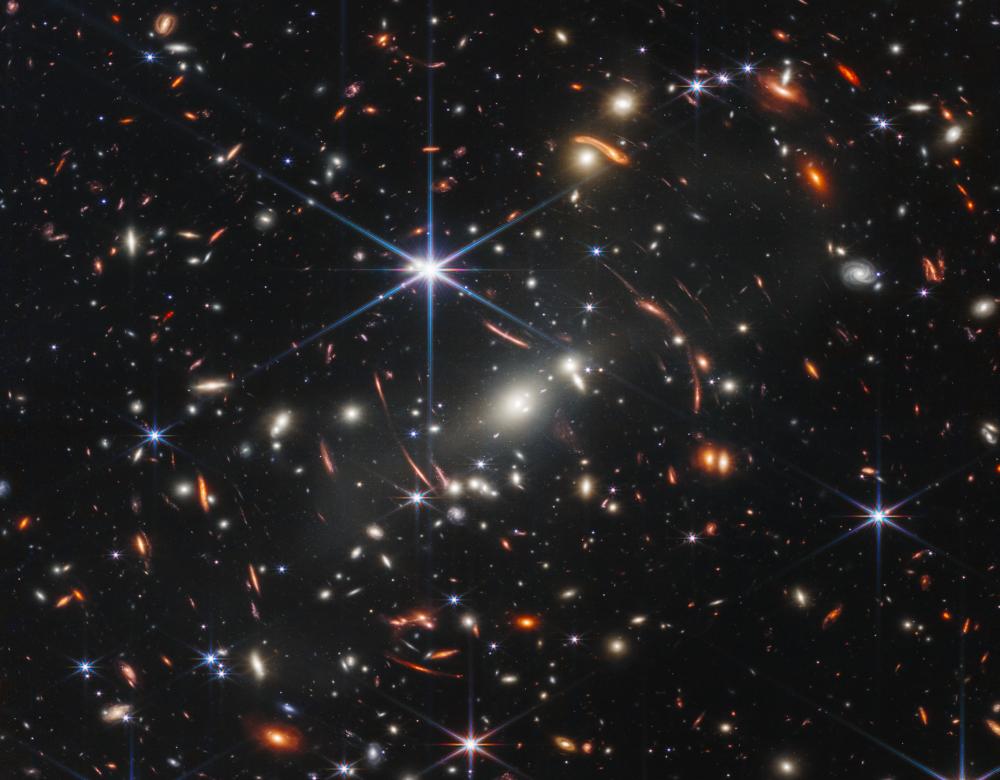
Back to the beginning of the universe
NASA unveiled the very first image of the James Webb after a presentation by U.S. President Joe Biden on 11 July 2022. The incredible number of stars visible represents a tiny part of the sky – the equivalent of a grain of sand! Observation of the details reveals strange deformations. This is gravitational lensing: when light passes close to a massive galaxy it causes a sufficient curvature of spacetime for the path of light to be visibly bent and change trajectory. As a result, the James Webb can observe galaxies 120 million years after the Big Bang, helping us to understand the evolution of the universe.
First spectrum of exoplanets
When an exoplanet passes in front of its star, its light diminishes and certain wavelengths are attenuated. As a result of these ‘holes’ in the star’s light spectrum, researchers can learn about the elements in the exoplanet’s atmosphere. JWST observed the shadow of WASP-39 b, a hot Jupiter-like planet 700 light-years away. The data are still being analysed, but some surprises have already been revealed, such as the presence of sulphur dioxide (SO2). Detected for the first time around an exoplanet, this element is an essential compound for life.
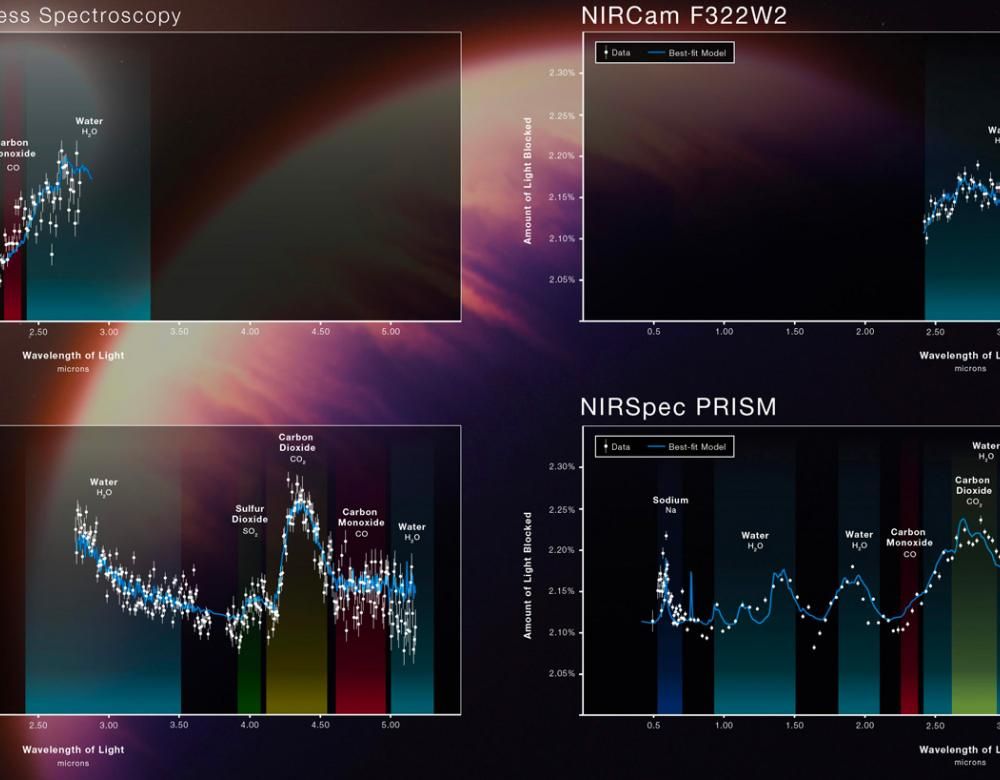
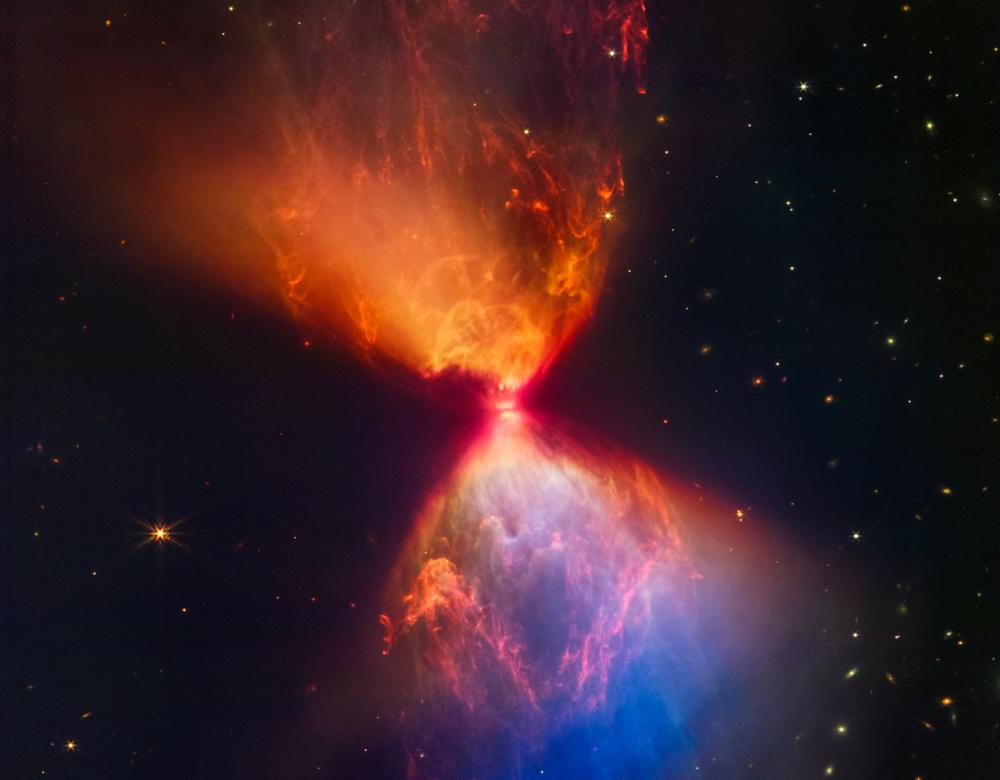
A protostar shaped like an hourglass
A celestial hourglass? Time has been at work: this star in formation – just 100,000 years old – stores the surrounding matter, while also emitting superb ejections due to its internal activity. Its amazing activity with bubbles and hydrogen filaments is visible here in infrared. It will light up and become a fully-fledged star in several hundred thousand years.
A spectacular technological leap
The best way to understand the prodigious technical advances of the James Webb is comparing it to its ‘ancestors.’ Hubble, sensitive to visible light, is not even in the same category. The James Webb, specialised in infrared, is comparable to Wise and Spitzer, as shown in this view of the Large Magellanic Cloud, a satellite galaxy of the Milky Way. The Wise’s image provides the best contrasts and shows the major stars. The Spitzer image is clearer and the background is slightly visible. But JWST reveals the eight branches of the stars, related to the design of mirrors, and gas clouds.
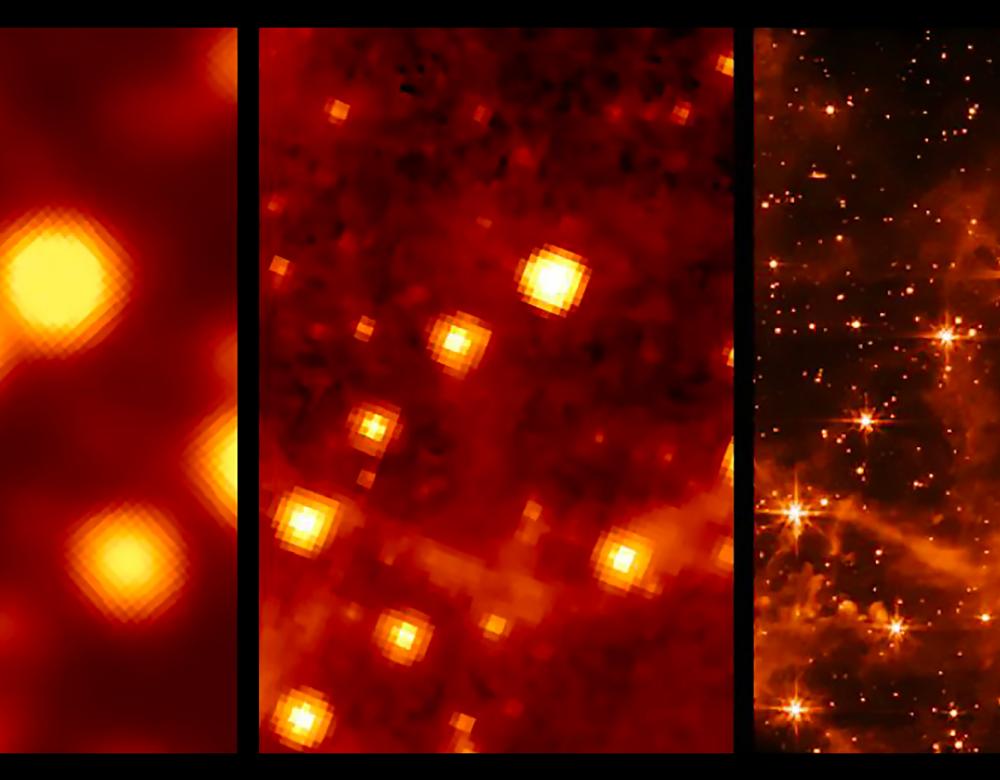
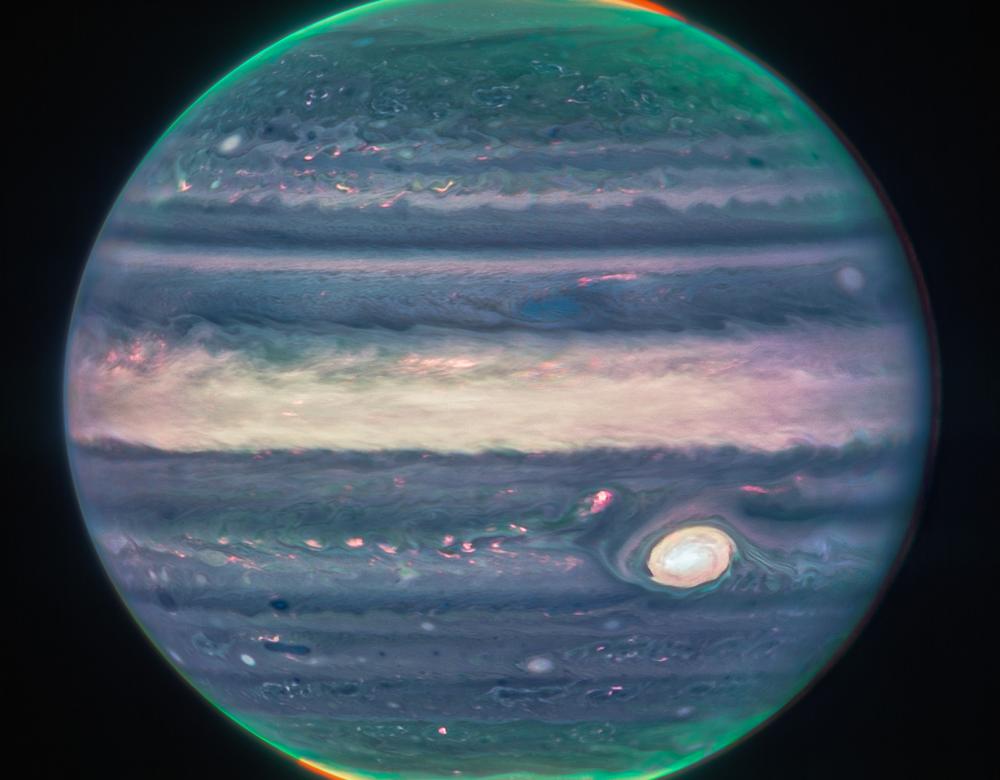
Jupiter in a new light
An brand new view of Jupiter. The big red spot of the giant planet turns white, its polar auroras turn red, and its atmosphere turns green. That’s because it is seen through infrared NIRCam filters. The reflections of the auroras on its thick layer of clouds are visible, like the Great Red Spot’s endless storm which is very white here.
A welcome return to Neptune and its moons
Finally a new image of Neptune! The eighth planet of the Solar System, an icy giant with an upper atmosphere thrashed by record winds of 2,000 km/h is rarely photographed. Discovered in 1846, it was first observed in detail by the Voyager 2 spacecraft in 1989. Since then, Hubble has contemplated it in visible light. The JWST has captured its infrared image: the methane present in Neptune’s atmosphere absorbs these wavelengths, showing black bands on the icy giant. Seven of its fourteen moons, including Triton, very bright at the top left, are visible with the naked eye.
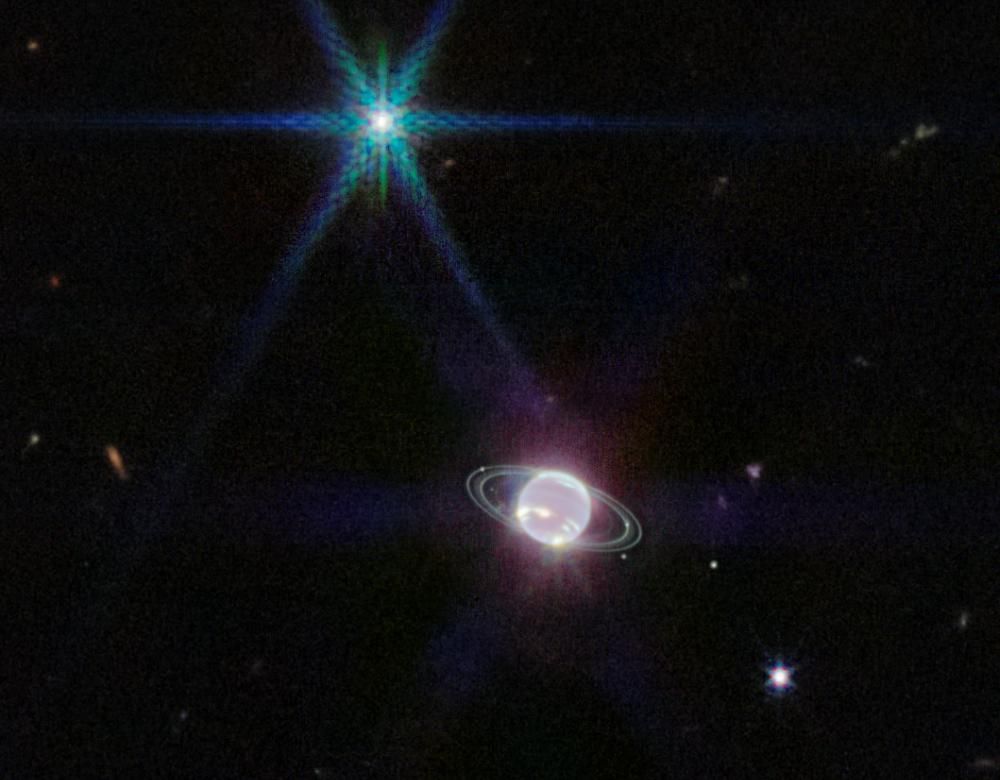
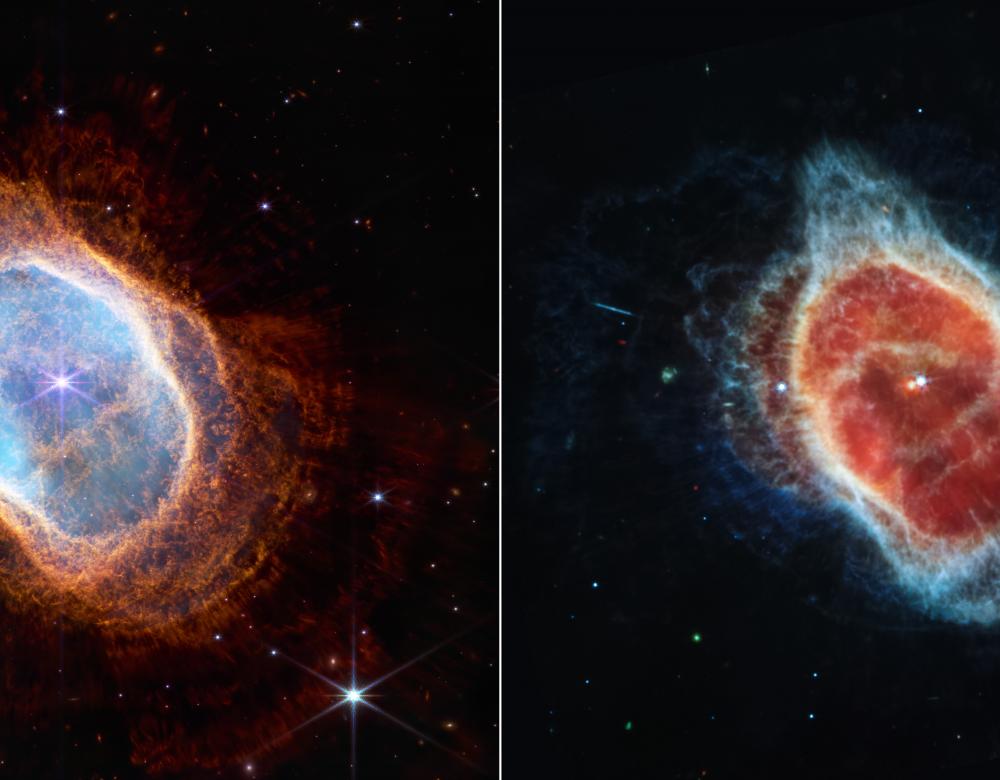
The Southern Ring revealed
Taken here by two JWST instruments – NIRCam (left) and MIRI (right) – the Southern Ring is a planetary nebula, a star a the end of its life releasing its outer envelope into space. The ‘white dwarf’ behind this phenomenon is not alone. There is another star in the final stages of its evolution that will soon produce its own gas bubble. This is revealed by MIRI’s vision mid-infrared.
Pillars of Creation
Made famous by the Hubble Space Telescope, these are the famous Pillars of Creation seen by the JWST. They are located in the Eagle Nebula, 6,500 light-years away. The opacity of the pillars is dissipated, revealing the stars in this gigantic nursery.
